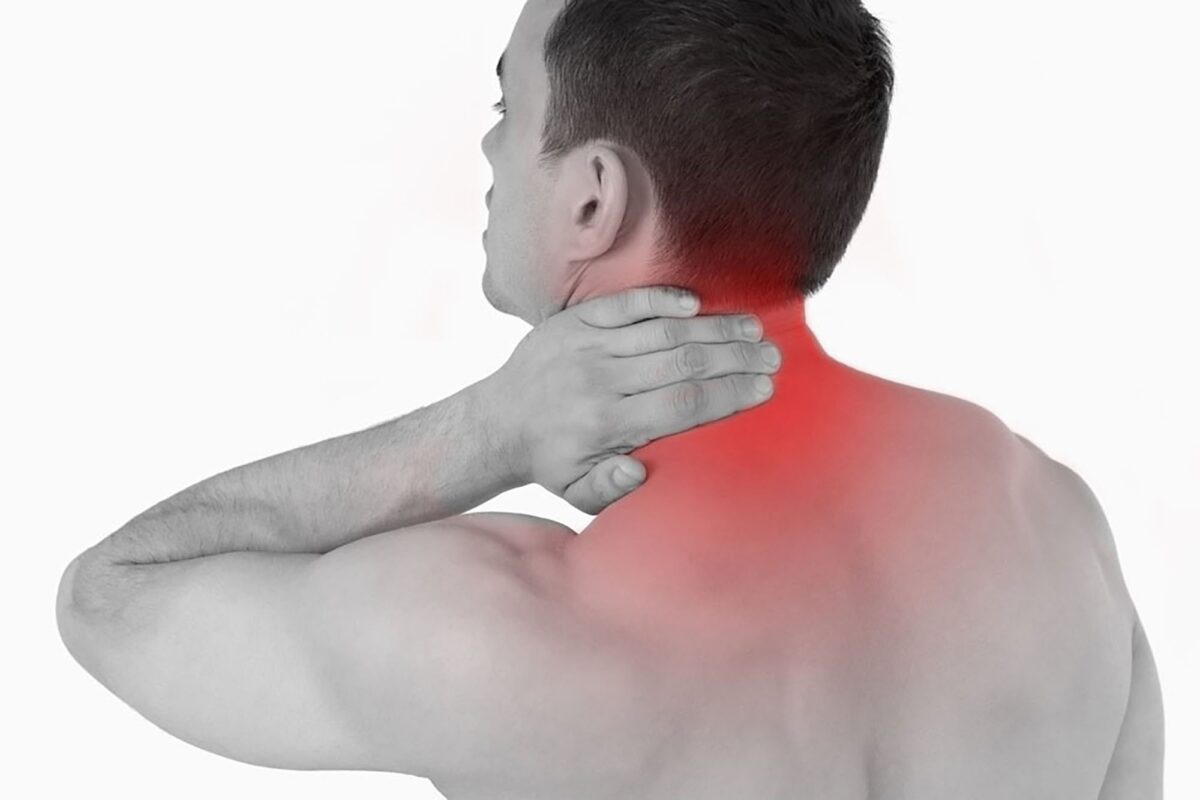Overview
Neck pain, commonly experienced as discomfort or stiffness in the neck and surrounding areas, can affect individuals of any age and is often linked to everyday factors such as poor posture, overuse of muscles, or stress. This type of pain may range from mild to severe, sometimes accompanied by difficulty moving the neck or radiating pain toward the shoulders or upper back. While it is typically not a cause for alarm, neck pain can signal an underlying issue requiring medical attention if persistent or severe.
The causes of neck pain are varied, with many cases resulting from physical strain due to repetitive movements or poor posture, such as prolonged screen use or incorrect sleeping positions. Additionally, injuries like whiplash from accidents, medical conditions such as arthritis, or even stress-induced muscle tension can contribute to neck discomfort. Rare but serious causes, including tumors or infections like meningitis, are also possible, making it crucial to evaluate symptoms comprehensively.
Neck pain is particularly common among individuals with sedentary lifestyles, those involved in repetitive physical activities, and older adults who may experience age-related spinal changes. Although many cases resolve with simple measures such as rest, stretching, or over-the-counter pain relief, persistent or worsening symptoms—especially those involving numbness, weakness, or trauma—should prompt a consultation with a healthcare professional.
Table of Contents
Possible Causes of Neck Pain

Neck pain can arise from a wide range of conditions, each with distinct causes, symptoms, and treatments. Below are some of the most common causes of neck pain and how they are addressed:
- Physical strain due to repetitive movements. Activities requiring repetitive neck movements, such as swimming freestyle, can strain neck muscles and lead to pain. Diagnosis typically involves a physical examination and questions about activity history. Rest, gentle stretches, and physical therapy are common treatment approaches.
- Poor posture. Maintaining incorrect posture for extended periods, such as looking up while watching television or using devices, can strain neck muscles and joints. Diagnosis may include assessing posture and evaluating work or lifestyle habits. Postural correction, ergonomic adjustments, and exercises can help relieve symptoms.
- Injuries like whiplash. Neck injuries, such as whiplash from car accidents, cause sudden neck pain and stiffness due to rapid movement of the head. Doctors usually diagnose these injuries through physical exams, imaging tests, and a review of symptoms. Treatment may involve pain relief medication, immobilization, and rehabilitation exercises.
- Stress and muscle tension. Stress often results in muscle tightness in the neck and shoulder area, causing discomfort or pain. Diagnosis is based on patient history and an evaluation of stress levels. Stress management techniques, relaxation exercises, and massage therapy are often effective treatments.
- Tumors, cysts, or other neck masses. Abnormal growths in or near the neck may compress nerves, leading to pain. These conditions are diagnosed using imaging tests such as CT scans or MRIs. Treatment depends on the underlying cause and may include surgery, radiation, or other therapies.
- Chronic medical conditions. Disorders such as rheumatoid arthritis, cervical stenosis (spinal canal narrowing), or meningitis can present with neck pain as a primary symptom. These conditions are typically diagnosed with imaging studies, blood tests, or lumbar punctures for meningitis. Treatments vary but may include anti-inflammatory medications, physical therapy, and in severe cases, surgery.
While many cases of neck pain resolve with simple treatments like rest and improved ergonomics, others may indicate a more serious issue requiring medical intervention. Understanding the underlying causes is essential for effective management and long-term relief.
Conditions Associated with Neck Pain

Neck pain is a symptom that can be linked to various medical conditions, ranging from mild to severe. Below are some of the conditions commonly associated with neck pain, along with their diagnostic approaches and treatment options:
- Cervical Strain or Sprain. Overstretching or tearing of muscles, ligaments, or tendons in the neck due to poor posture, sudden movements, or physical activity can lead to cervical strain or sprain. Diagnosis is typically based on physical examination and patient history. Treatment includes rest, pain-relief medications, physical therapy, and sometimes bracing.
- Herniated Cervical Disc. A herniated or bulging disc in the cervical spine can press on nearby nerves, causing neck pain, stiffness, and sometimes pain radiating to the arms. Diagnosis involves imaging tests such as MRI or CT scans. Treatments include anti-inflammatory drugs, physical therapy, and in severe cases, surgical intervention.
- Cervical Spondylosis. Age-related wear and tear on cervical spine structures, such as discs and joints, can lead to cervical spondylosis, often causing chronic neck pain. Diagnosis is made through X-rays or MRIs. Non-surgical treatments like physical therapy, medications, and lifestyle adjustments are common, while surgery is reserved for advanced cases.
- Whiplash Injury. Sudden forward and backward movement of the neck, often due to vehicle accidents, can result in whiplash. This condition causes pain, stiffness, and sometimes headaches. Diagnosis involves a clinical evaluation and imaging to rule out fractures. Treatment includes rest, gentle exercises, and pain management techniques.
- Meningitis. Inflammation of the meninges, the protective membranes covering the brain and spinal cord, can cause severe neck stiffness and pain, along with fever and headache. Diagnosis involves a lumbar puncture and imaging. Meningitis is treated urgently with antibiotics or antiviral medications, depending on the cause.
- Rheumatoid Arthritis (RA). RA, an autoimmune disorder, can affect the cervical spine, causing pain, swelling, and stiffness. Diagnosis is made through blood tests and imaging studies. Treatment typically involves disease-modifying antirheumatic drugs (DMARDs), biologics, and physical therapy.
- Cervical Stenosis. Narrowing of the cervical spinal canal can compress the spinal cord and nerves, leading to pain, numbness, or weakness in the neck and extremities. Diagnosis includes MRI or CT scans. Treatments range from physical therapy and medications to surgical decompression.
- Fibromyalgia. This chronic pain disorder often causes widespread muscle pain, including in the neck. Diagnosis is clinical, based on symptoms and exclusion of other conditions. Management includes medication, exercise, and cognitive behavioral therapy.
- Tumors or Growths. Neck pain can be caused by tumors or abnormal growths compressing nearby tissues or nerves. Diagnosis involves imaging like MRI and sometimes biopsy. Treatment options include surgery, chemotherapy, or radiation therapy, depending on the type of growth.
- Osteoarthritis. Degeneration of cartilage in the cervical spine can lead to pain and reduced mobility. Diagnosis is based on imaging studies like X-rays. Treatment includes anti-inflammatory medications, physical therapy, and lifestyle modifications.
While neck pain may often be attributed to non-serious causes, these associated conditions highlight the importance of seeking medical evaluation if the pain is persistent, severe, or accompanied by other concerning symptoms. Early diagnosis and appropriate treatment are critical for managing these conditions effectively.
When to See a Doctor

Knowing when to seek medical advice for neck pain is essential, as some cases may signal a more serious underlying condition. While mild or occasional neck pain often resolves with rest and home care, certain situations warrant professional evaluation.
- Persistent pain or stiffness. If neck pain lasts for more than a few days or worsens despite rest and home treatments, it may indicate a condition that requires medical attention.
- Pain after an injury. Neck pain resulting from trauma, such as a car accident or fall, should always be evaluated by a doctor to rule out fractures, whiplash, or spinal cord injury.
- Neurological symptoms. Seek immediate care if neck pain is accompanied by numbness, tingling, or weakness in the arms, hands, or legs, as this may indicate nerve compression or spinal cord involvement.
- Radiating pain. Pain spreading from the neck to the shoulders, arms, or back may suggest conditions such as a herniated disc or cervical radiculopathy, requiring specialized care.
- Systemic symptoms. Neck pain with fever, chills, unexplained weight loss, or difficulty swallowing may point to infections, cancers, or other systemic illnesses needing prompt evaluation.
What Type of Doctor to Seek
For persistent or severe neck pain, start by consulting a primary care physician, who can perform an initial evaluation and determine if referral to a specialist is needed. Depending on the suspected cause, you may be referred to an orthopedic specialist, neurologist, rheumatologist, or physical therapist. For injuries or suspected nerve involvement, seeing a spine specialist may be appropriate.
What to Expect From Your First Doctor Visit
During your first visit, the doctor will take a detailed medical history, ask about the onset and progression of the pain, and perform a physical examination. You may be asked about any recent injuries, your daily activities, and accompanying symptoms like numbness or stiffness. Diagnostic tests such as X-rays, MRIs, or blood work may be ordered to identify the cause of the pain. Based on the findings, the doctor will recommend a treatment plan, which may include medication, physical therapy, or further testing.
Neck Pain FAQs
Neck pain is a common issue that raises many questions about its causes, treatments, and when to seek medical care. Below are answers to frequently asked questions to help you better understand and manage this condition.
- What are the most common causes of neck pain?
Neck pain is often caused by poor posture, muscle strain, injuries like whiplash, or degenerative conditions such as cervical spondylosis. Stress and prolonged screen time can also contribute. - When should I worry about neck pain?
Seek medical attention if neck pain persists for more than a few days, follows an injury, or is accompanied by neurological symptoms like numbness, weakness, or pain radiating to the arms or shoulders. - Can sleeping position cause neck pain?
Yes, sleeping in an awkward position or using an unsupportive pillow can strain neck muscles and lead to pain. Using a pillow that aligns the neck with the spine can help. - Can stress cause neck pain?
Stress can lead to muscle tension in the neck and shoulders, causing pain or stiffness. Relaxation techniques, stretching, and massage may help relieve stress-related neck pain. - What exercises can help relieve neck pain?
Gentle neck stretches, such as tilting the head side to side or forward and backward, can help. Strengthening exercises like shoulder rolls and chin tucks may also provide relief. - Can neck pain be a symptom of a serious condition?
Yes, neck pain can sometimes indicate serious issues like meningitis, tumors, or cervical spine injuries. These conditions often come with other symptoms, such as fever, weight loss, or severe neurological signs. - How is neck pain diagnosed?
Doctors diagnose neck pain through physical examinations, patient history, and imaging tests like X-rays, MRIs, or CT scans. Blood tests or spinal fluid analysis may be necessary for suspected infections or systemic conditions. - What treatments are available for neck pain?
Treatments depend on the cause but may include rest, physical therapy, medication (such as pain relievers or anti-inflammatories), and ergonomic adjustments. In severe cases, steroid injections or surgery may be required. - Can poor posture at work cause neck pain?
Yes, prolonged poor posture while sitting at a desk can strain neck muscles and lead to pain. Using an ergonomic chair and ensuring proper screen height can reduce the risk. - Is neck pain preventable?
Many cases of neck pain can be prevented with good posture, regular breaks during prolonged activities, stress management, and maintaining a healthy lifestyle. Proper exercise and ergonomic adjustments can also help prevent strain.
Understanding neck pain and its potential causes is the first step in finding effective relief. If you have persistent symptoms or additional concerns, consulting a healthcare professional can provide clarity and guidance for proper management.


